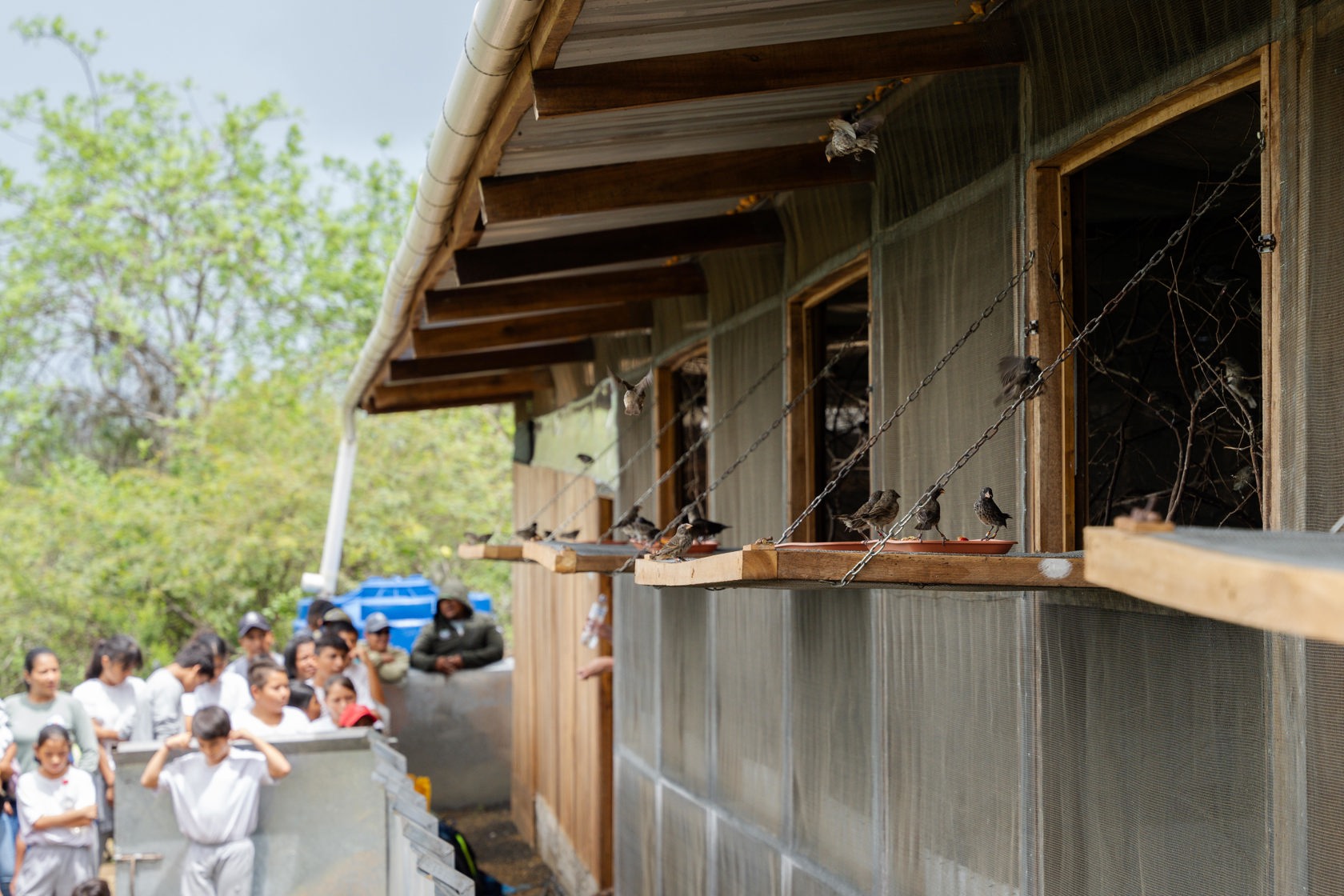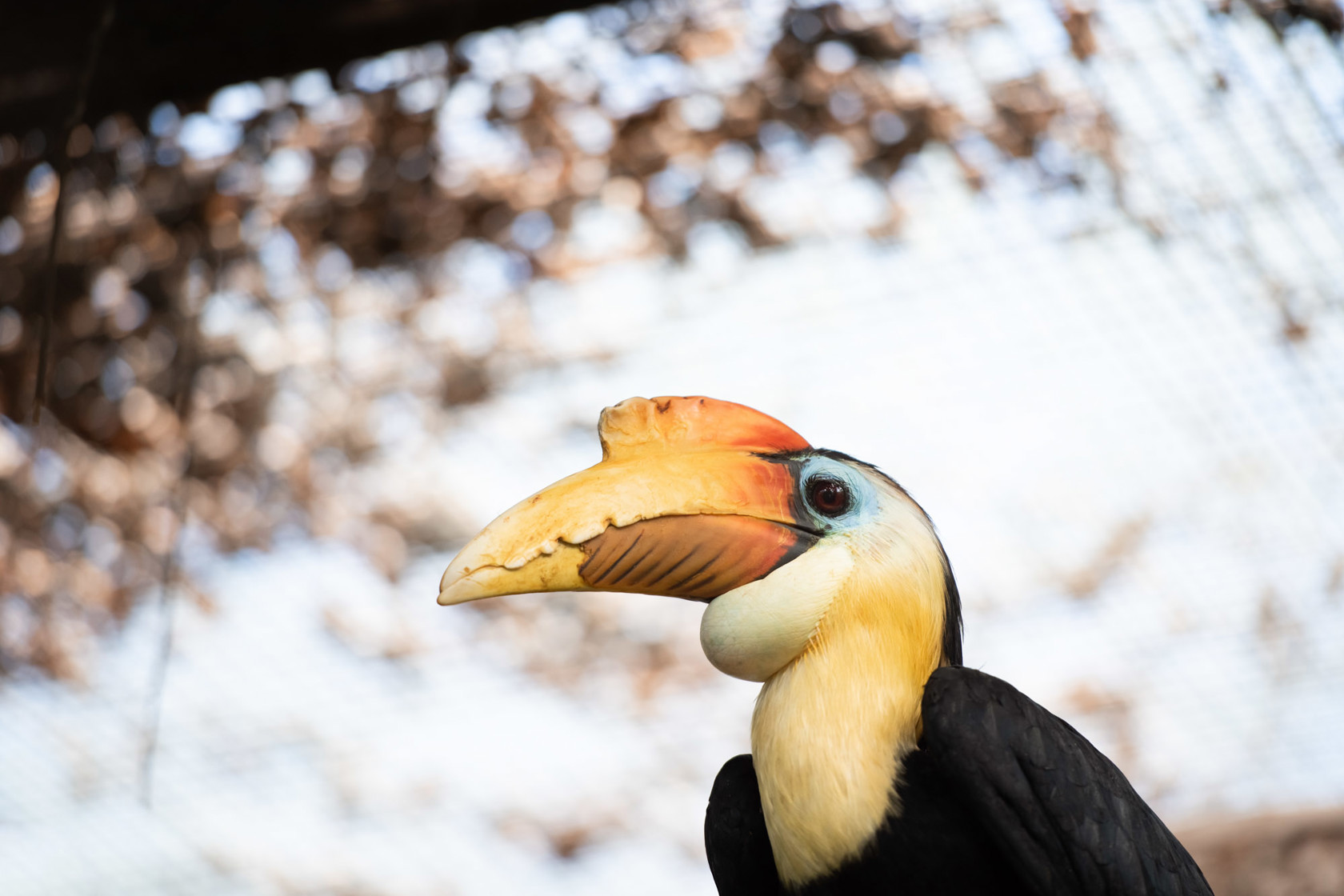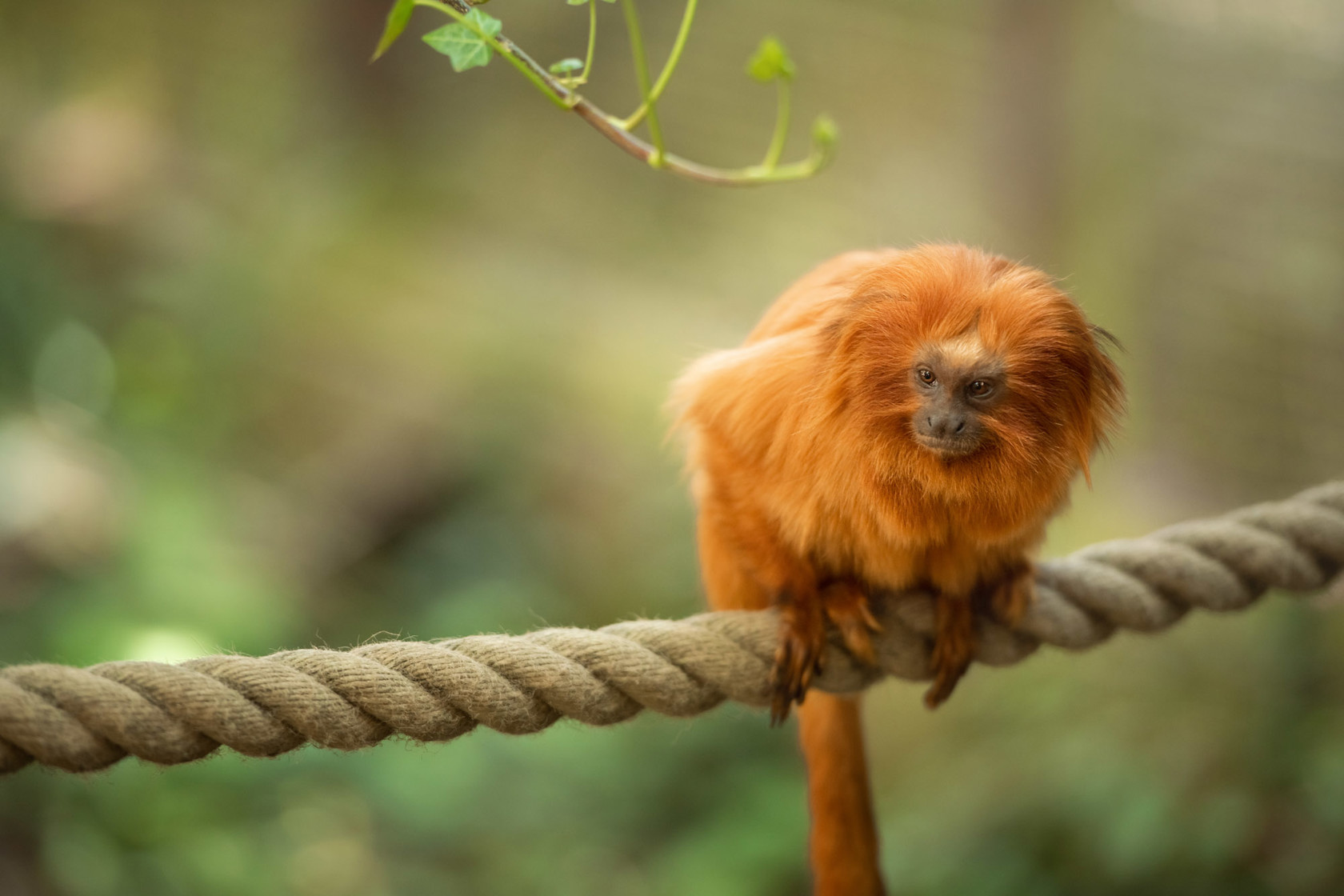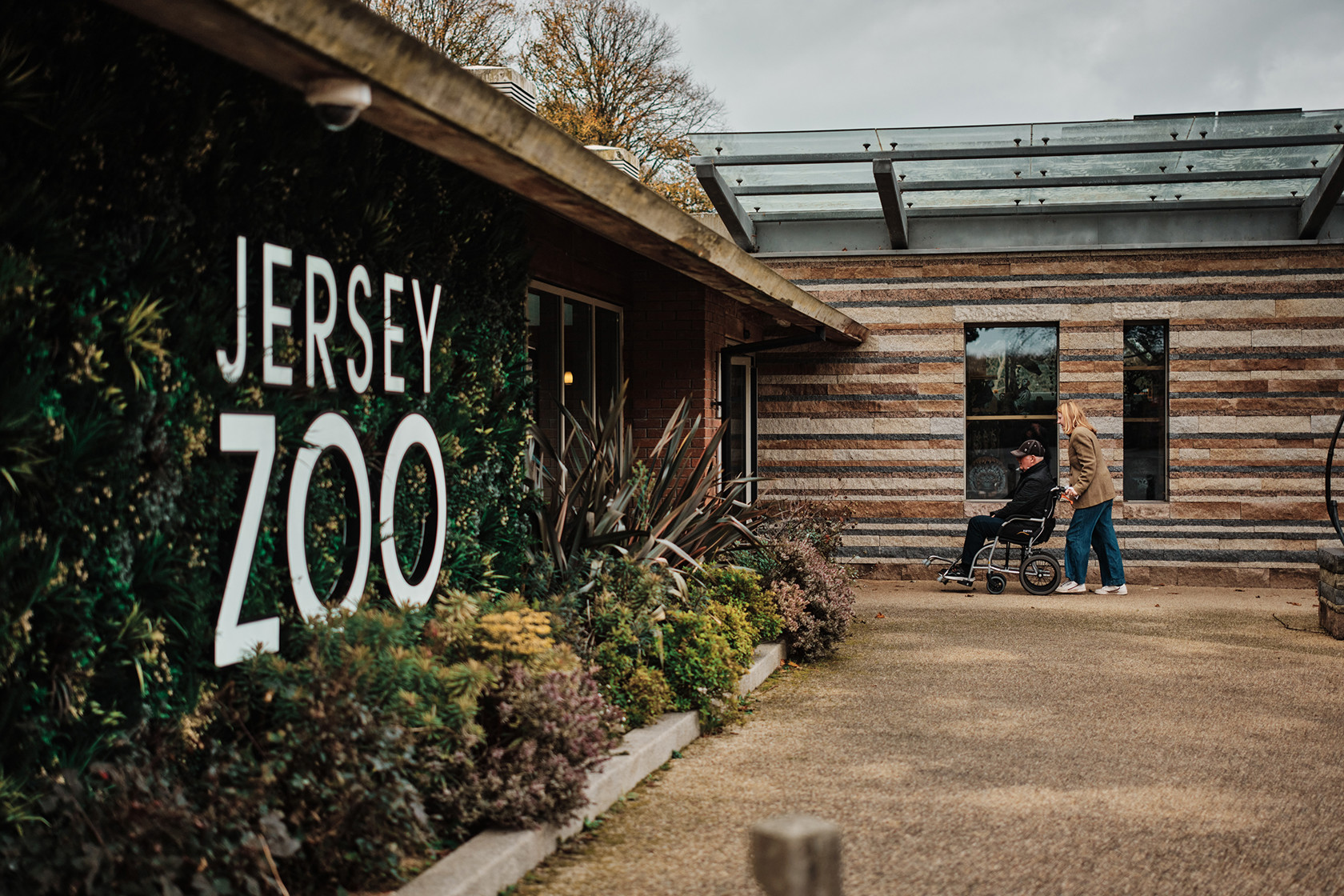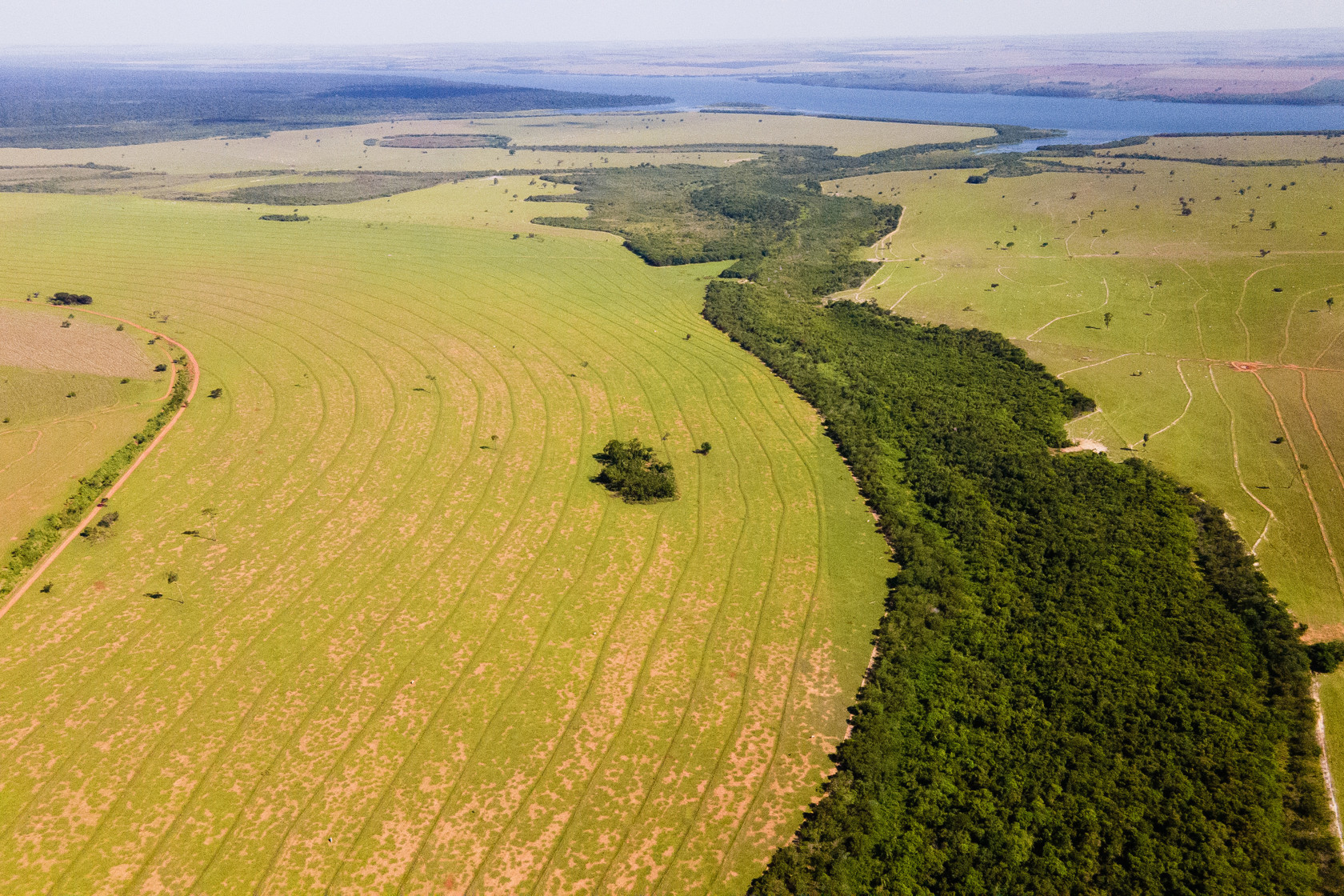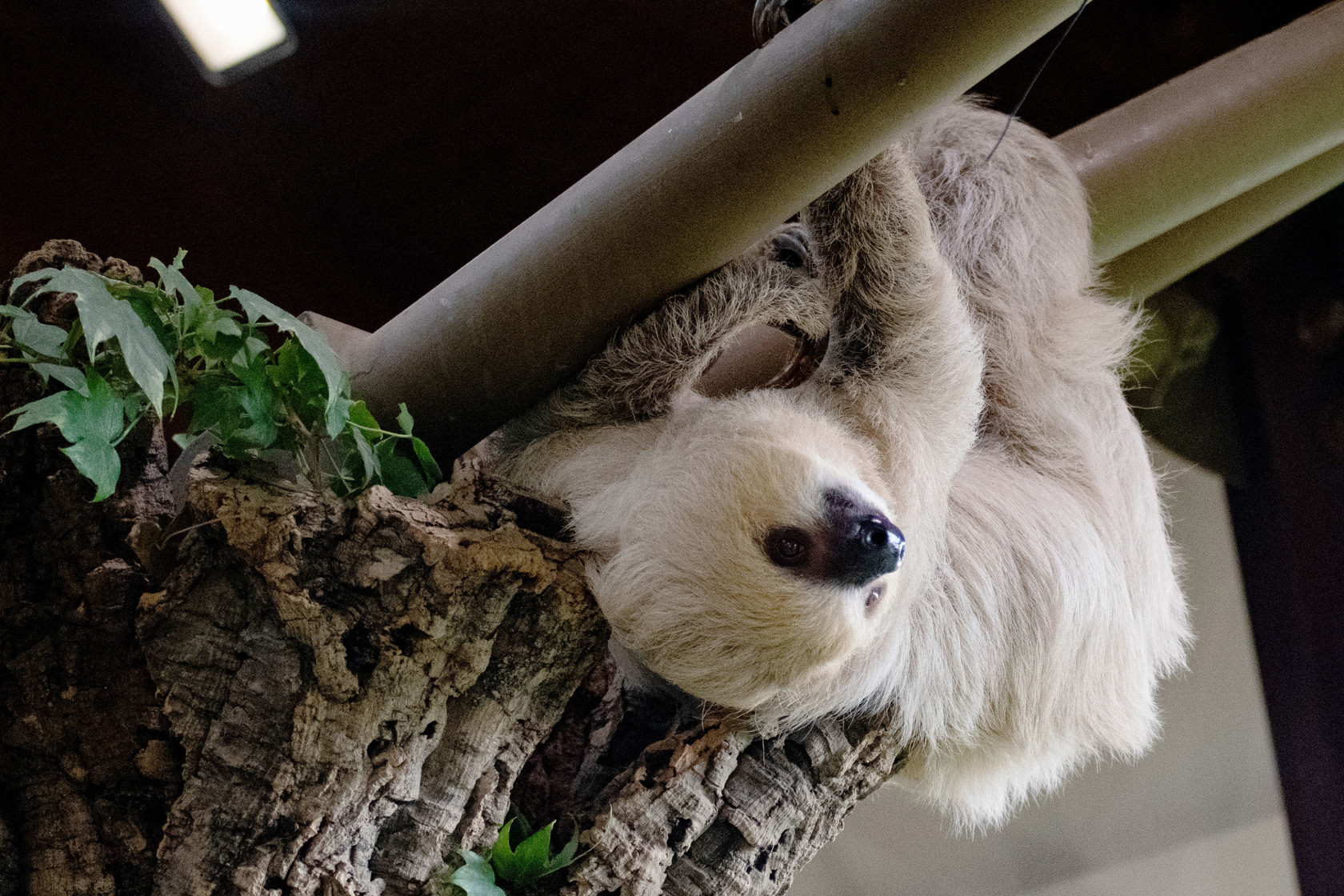Finches released in the Galapagos signal triumph for Floreana Island Restoration Project
5 March 2024
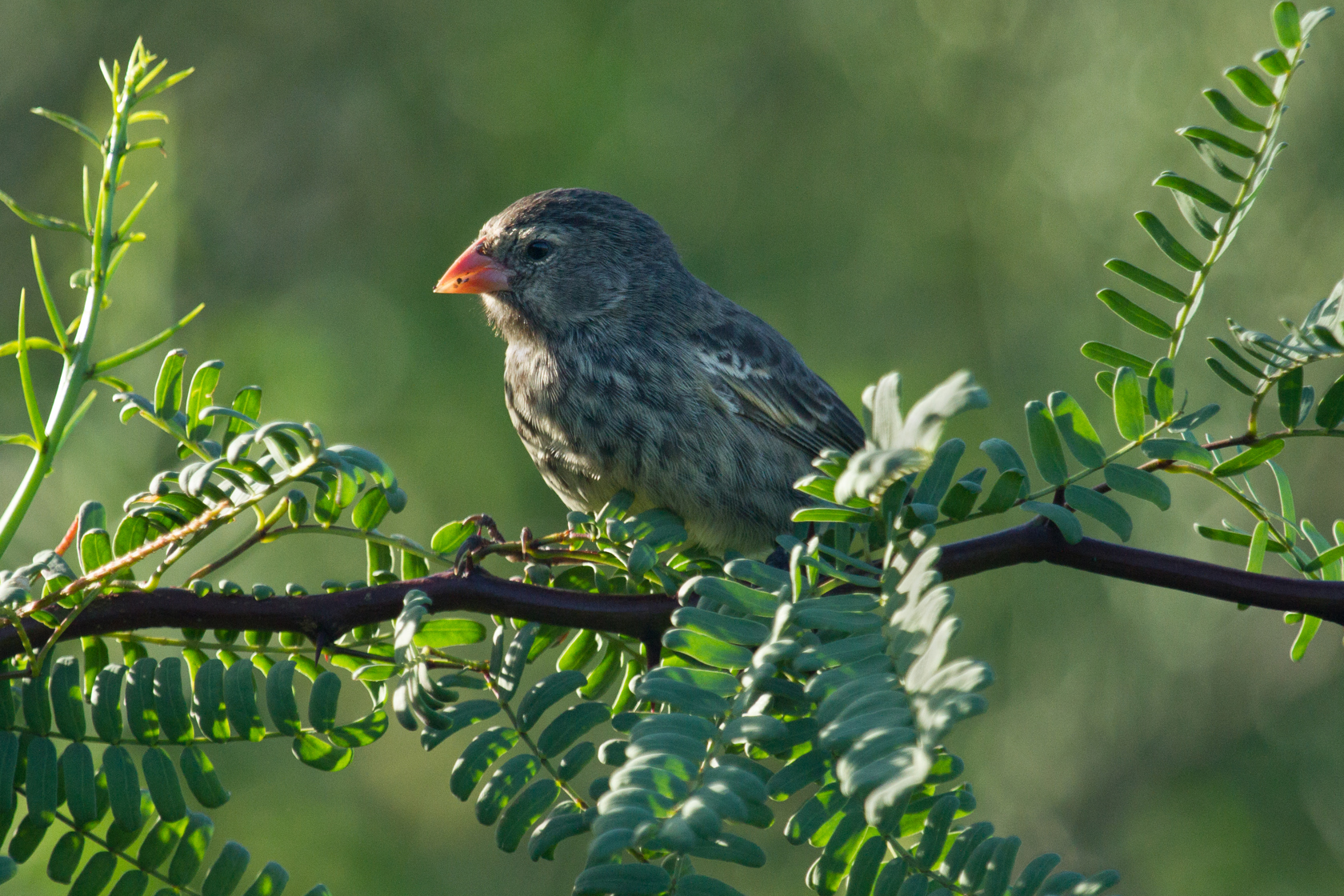
Five native finch species were released in February 2024, from the highlands and lowlands of Floreana Island in the Galapagos, marking a significant phase of the largest conservation project the archipelago has ever seen.
The Floreana Island Restoration Project is led by the Galapagos National Park, the Galapagos Biosecurity Agency, co-executed by the Jocotoco Conservation Foundation and Island Conservation in partnership with the Floreana community, Durrell Wildlife Conservation Trust, Galapagos Conservation Trust, and others. Together, these partners are working to realise the vision of an ecologically thriving and sustainable Floreana by removing invasive species and reintroducing twelve locally extinct native animals, including the Floreana giant tortoises, vermilion flycatcher, and the Floreana mockingbird (known as Darwin’s muse).
After more than a decade of planning, removal of invasive species began in October 2023 and was completed in December 2023. Removing invasive species will make Floreana Island safe for native plants and animals to once again flourish. While the removal of invasive species was in progress, finches were held safely in both the lowlands and highlands under careful watch by park rangers and conservationists.
With promising signs that the removal of invasive species was successful, the Galapagos National Park Directorate, Durrell Wildlife Conservation Trust, Island Conservation, the Konrad Lorenz Research Center for Behavior and Cognition at the University of Vienna, and Jocotoco Foundation safely released all finches from captivity—170 finches into the highlands and 340 into the lowlands, with a few medium tree-finches, small ground-finches, medium ground-finches and cactus finches wearing radio transmitters. The finches were released in waves, with the final population released on 22 February 2024.
Roland Digby, Conservation Biologist at Durrell Wildlife Conservation Trust, who led the finch captivity work, said the release of the birds was exhilarating and rewarding. “Releasing these finches onto an island full of food (thanks to the rain) and without predators is incredibly satisfying. This is the moment we’ve been working toward.”
All these finch species are essential to flora and fauna flourishing on Floreana, acting as pollinators, seed dispersers, and insect population control. The medium tree-finch is especially rare and precious because it’s endemic to Floreana Island—it can only be found there and nowhere else in the world.
Paula Castaño, Island Conservation’s Native Species Manager, reports that this release is very promising for the success of the restoration and rewilding of Floreana. “We have been planning for this moment for so many years, it feels surreal to experience it. The release of these finches marks a monumental moment for the future of Floreana. It paves the way for the reintroduction of the species that were locally extirpated,” Castaño said.
The Konrad Lorenz Research Center for Behavior and Cognition, a core facility of the University of Vienna is leading the monitoring of these finches upon release using a state-of-the-art drone system developed by Wildlife Drones, which can track up to 40 birds at a time. This will allow the team to measure the success of the restoration and watch these populations re-establish, grow, and flourish.
“We are already starting to see signs of the island’s recovery following the eradication,” says Digby. “Species that were previously missing, like doves, are already starting to return and pair up. It’s really made all our hard work worthwhile.”
This project is led by the environmental authorities: the Galapagos National Park and the Agency for the biosecurity for the Galapagos, and was made possible thanks to funding from the UK Government through the Darwin Initiative, Aurum Fund Management Ltd, Martin Saunders, The Tresanton Trust, Galapagos Conservation Trust, Re:wild, Island Conservation, Blue Action Fund, the Konrad Lorenz Research Center for Behavior and Cognition, a core facility of the University of Vienna, International Galapagos Tour Operators Association (IGTOA), National Fish and Wildlife Foundation, Bezos Earth Fund, Global Environment Facility/CAF, FIAS/FEIG, Lindblad Expeditions-National Geographic, Galapagos Conservancy, COmON Foundation/Fundación Charles Darwin, Canodros, and Splendor.
